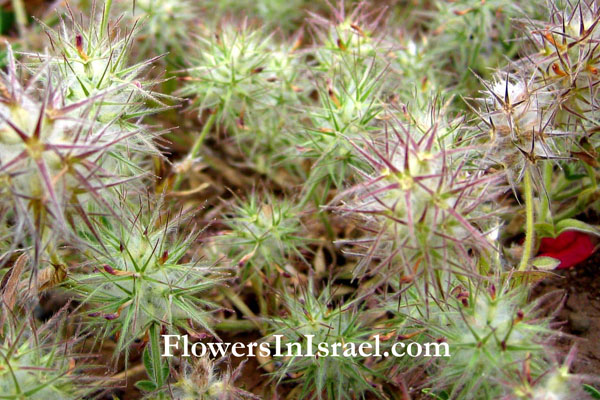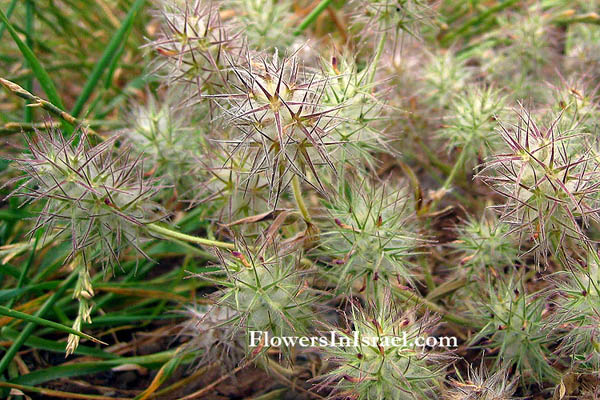Eastern star clover,
Hebrew: תלתן נאה, Arabic: النفل الداسيوري
| Scientific name: | Trifolium dasyurum C. Presl | |
| Synonym name: | Trifolium formosum d'Urv., Trifolium velivolumPaine | |
| Common name: | Eastern star clover | |
| Hebrew name: | תלתן נאה | |
| Arabic name: | النفل الداسيوري | |
| Plant Family: | Papilionaceae, פרפרניים |

|
| Life form: | Therophyte, annual | |
| Leaves: | Alternate, compound, trifoliate | |
| Flowers: | Pink | |
| Flowering Period: | March, April, May | |
| Habitat: | Batha, Phrygana | |
| Distribution: | Mediterranean Woodlands and Shrublands, Semi-steppe shrublands, Shrub-steppes, Deserts and extreme deserts, Montane vegetation of Mt. Hermon | |
| Chorotype: | Mediterranean | |
| Summer shedding: | Ephemeral |

Derivation of the botanical name: Trifolium, Latin tri, tres, three; folium, leaf; three-leaved. dasyurum, dasys δασυϛ hairy, bushy, thick grown; oura, tail; hairy-tail. formosum, finely formed, handsome, beautiful. velivolum, sail-flying, winged with sails. The Hebrew name: תלתן, taltan, clover, trefoil, from tlat (Aramaic) three; the clover is recalled in the Mishnah Kilayim 2:5, "[a field} of clover among which grew up..."
|